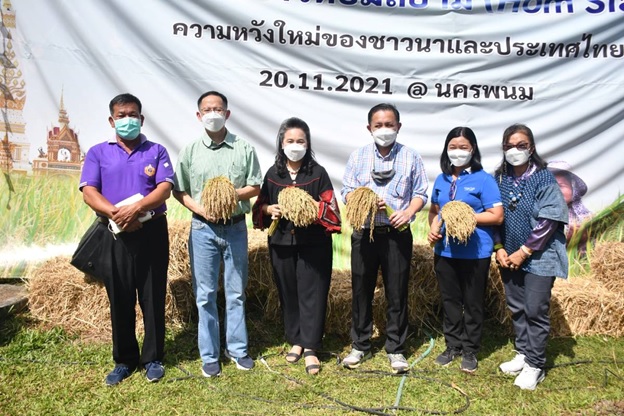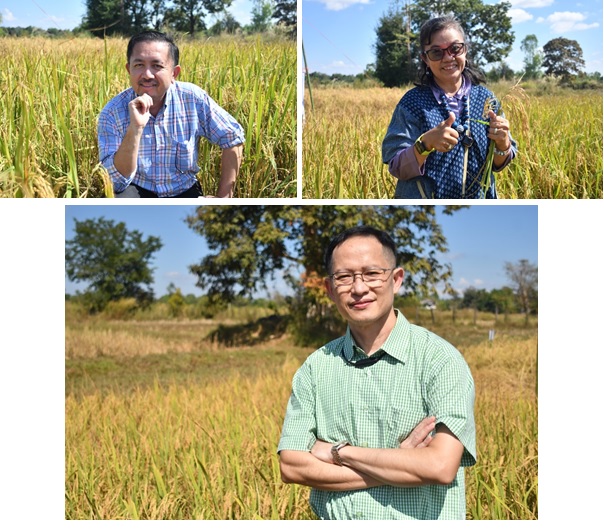Hom Siam is a photosensitive non-glutinous rice with medium height, high yield, good cooking quality, resistant to blast and drought conditions. The sturdy form of 120 cm height prevents plants from falling over under windy condition and makes it easy for machine harvest befitting the modern farming. Application for a variety registration of Hom Siam has been filed with the Department of Agriculture.

BIOTEC Deputy Executive Director Dr. Theerayut Toojinda who leads BIOTEC rice research team explained that Hom Siam was developed by employing marker-assisted selection technology. Marker-assisted selection is a powerful technology, enabling breeders to speed up the breeding process and make it more efficient to achieve rice cultivars with desired characteristics and climate resilience. Dr. Kanyanat Sirithunya, an expert in rice breeding and farmer participatory field trial, added information on field trials of Hom Siam. In 2020, the trials were conducted with the participation of farmers in three provinces, namely Ubon Ratchathani, Amnat Charoen and Sisaket. The results showed an average yield of 530 kg per rai (3.31 tons per ha), 2.1 times higher than that of jasmine rice KDML105 planted in the same field. In 2021, the field trials were expanded to area in the upper northern and northeastern Thailand. A total of 31 rice farmers from 12 provinces joined the field trial project this year, covering a total planting area of 21 rai (3.36 ha).

BIOTEC Executive Director Dr. Wonnop Visessanguan stated that agriculture and food is one of the focused sectors under the Bio-Circular-Green Economy (BCG) national agenda and BIOTEC-NSTDA has been actively engaged in research and development to support this essential sector through BIOTEC Innovative Plant Biotechnology and Precision Agriculture Research Team. By using marker-assisted technology, several new and improved rice varieties have been developed to fit with environmental conditions of cultivated areas. Blast-resistant jasmine glutinous rice Thanyasirin, broad-spectrum-disease-resistant fragrant glutinous rice Nan59 and climate-resilient aromatic glutinous rice Hom Naga are among new glutinous rice cultivars introduced to farmers in the north and northeast of Thailand, contributing to food security and low level of pesticide use. Homcholasit was developed with a quality for flash flooding tolerance, high yield and non-photoperiod sensitivity. The variety gains popularity among rice farmers in the flood-prone areas in the lower northern, central and southern Thailand. Along with the new rice varieties, BIOTEC research team also trains farmers on seed production, enabling sustainable rice farming.
